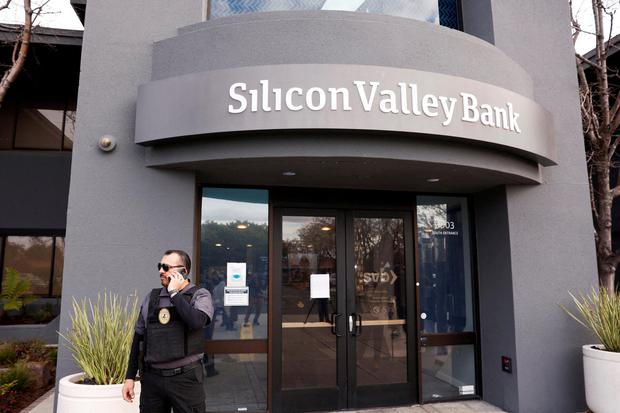Is Crypto to blame for the collapse of 3 U.S. banks in one week?
Last week, three banks in the United States collapsed due to the inability to keep up with the rate of withdrawals by their customers. While the deposits of their respective customers have been guaranteed by the actions of the federal government, investors (stock and bond buyers of these companies) are still at risk.
It is important to note that these three banks are regarded as “cryptocurrency friendly” banks because many cryptocurrency projects such as Circle, USDC, Coinbase, and others bank with these institutions.
That being said, many are wondering if the downturn seen in the cryptocurrency market is one of the reasons the banks failed or if their indirect involvement with the industry was the final nail to their respective coffins.
After all, one of the banks taken over, Signature Bank, announced last year that it was planning on reducing its deposits tied to cryptocurrencies by $8 billion to $10 billion, which signalled a move away from the digital asset industry for the bank that until recently had been one of the most crypto-friendly companies on Wall Street.
The Banking System
Before we place blame on any industry or organization, let’s understand how the banking industry and system truly work. The banking system is a complex network of financial institutions, such as commercial banks, investment banks, and central banks, that work together to provide various financial services and products to individuals, businesses, and governments.
Our focus, deposit money banks, which is also the starting phase of the banking process, is where individuals, businesses, and governments make deposits into the financial institution. At this point, it is important to note that when a customer deposits money into a bank, the bank then has the legal right to use that money to make loans and investments.
While the banks have a legal right to use the money to make loans and investments to meet their obligations, The entire banking concept is also based on the assumption that depositors will not want to withdraw their money at the same time. Before the advent of modern technology and electronic banking, withdrawals were typically processed manually, which could take several days or even weeks.
For example, if a person wanted to withdraw cash from their bank account, they would need to visit their bank in person, fill out a withdrawal slip, and wait for a bank teller to process the transaction.
The teller would need to check the account holder’s balance, verify their identity, and physically count out the cash before handing it over to the customer. If you are lucky, this process could take several hours, depending on the bank’s workload and the amount of the withdrawal. If you are not lucky, it takes weeks.
For larger withdrawals or transfers, such as those involving wire transfers or international transactions, the process could take even longer. Banks would need to verify the transaction details, confirm the identity of both parties, and comply with various regulatory requirements before processing the transfer. This process again could take several weeks, depending on the complexity of the transaction and the involvement of multiple banks or financial institutions.
However, today, banks advertise and pride themselves on quick and fast transaction speeds to stay relevant and attract customers. Now, imagine what happens when banks do not honour their promise of instant financial transactions.
The answer lies in the asset-liability mismatch of banks, which can lead to disastrous consequences for the broader financial system. Silicon Valley Bank (SVB), for example, which is one of the leading banks for start-ups and venture capital firms in the United States, failed because of a liquidity crisis that has reverberated throughout the startup ecosystem.
Silicon Valley Bank’s struggles shed light on the many risks inherent in banking, including mismanaging the economic value of equity (EVE), failing to hedge interest rate risk, and a sudden outflow of deposits (funding risk).
Risk arises when a bank’s assets and liabilities are not properly aligned (in terms of maturity or interest rate sensitivity), leading to a mismatch that can cause significant losses if interest rates change.
The failure to hedge interest rate risk leaves banks vulnerable to changes in the market that can erode profitability. Funding risk occurs when a bank is unable to meet its obligations due to an unexpected outflow of funds, which in this case, is a run-on deposit. In SVB’s case, these risks combined to create a perfect storm that threatened the bank’s survival.
Although SVB recently made strategic decisions to restructure its balance sheet, aiming to take advantage of potential higher short-term interest rates and protect net interest income (NII) and net interest margin (NIM), all to maximize profitability, the firm still failed.
This is because the excess of capital and funding in recent years resulted in a situation where start-ups had excess funds to deposit but little inclination to borrow.
By the end of March 2022, SVB boasted $198 billion in deposits, compared to $74 billion in June 2020. As banks generate revenue by earning a higher interest rate from borrowers than they pay depositors, SVB opted to allocate the majority of the funds into bonds, primarily federal agency mortgage-backed securities (a common choice) to offset the imbalance caused by significant corporate deposits, which entail minimal credit risk but can be exposed to substantial interest-rate risk. I mean what would you expect?
They can’t have so many deposits without utilizing that funds to generate more revenue to keep up with expansions and other processes.
However, in 2022, as interest rates escalated steeply and the bond market declined significantly because of the contractionary monetary policies of the federal reserve, Silicon Valley Bank’s bond portfolio suffered a massive blow. By the end of the year, the bank had a securities portfolio worth $117 billion, constituting a substantial portion of its $211 billion in total assets.
Consequently, SVB was compelled to liquidate a portion of its portfolio, which was readily available for sale, to obtain cash, incurring a loss of $1.8 billion. Regrettably, the loss had a direct impact on the bank’s capital ratio, necessitating the need for SVB to secure additional capital to maintain solvency.
Furthermore, SVB found itself in a scenario where its financial distress threatened to destabilize the entire financial system, similar to the situation faced by banks during the 2007–2008 global financial crisis (GFC).
However, Silicon Valley Bank failed to raise additional capital or secure a government bailout similar to that of Lehman Brothers, which declared bankruptcy in 2008.
Despite dismissing the idea of a bailout, the government extended “the search for a buyer” support to the Silicon Valley Bank to ensure depositors have access to their funds. Furthermore, the collapse of SVB resulted in such an imminent contagion that regulators decided to dissolve Signature Bank, which had a customer base of risky cryptocurrency firms.
This illustrates a typical practice in conventional finance, wherein regulators intervene to prevent a spillover effect.
It is worth noting that many banks experienced an asset-liability mismatch during the GFC because they funded long-term assets with short-term liabilities, leading to a funding shortfall when depositors withdrew their funds en masse.
For instance, an old-fashioned bank run occurred at Northern Rock in the United Kingdom in September 2007 as customers lined up outside branches to withdraw their money. Northern Rock was also significantly dependent on non-retail funding like SVB.
Is Crypto to Blame?
It would be inaccurate to entirely blame the cryptocurrency industry for the failure of a bank that coincidentally included some crypto companies in its portfolio. It’s also unjust to criticize the crypto industry when the underlying problem is that traditional banks (and their regulators) have done a poor job of evaluating and managing the risks involved in serving their clientele.
Silicon Valley Bank’s exclusive focus on NII and NIM led to neglecting the broader issue of EVE risk, which exposed it to interest rate changes and underlying EVE risk, which is the same situation as that of Silvergate and Signature bank.
Moreover, SVB’s liquidity issues stemmed largely from its failure to hedge interest rate risk (despite its large portfolio of fixed-rate assets), which caused a decline in EVE and earnings as interest rates rose.
Furthermore, the bank faced funding risk resulting from a reliance on volatile non-retail deposits, which is an internal management decision similar to the ones previously discussed.
Therefore, if the Federal Reserve’s oversight measures were not relaxed, Silvergate, SVB and Signature Bank would have been better equipped to handle financial shocks with stricter liquidity and capital requirements and regular stress tests.
Banks must begin taking necessary precautions and following sound risk management procedures. They cannot merely rely on the Federal Deposit Insurance Corporation’s deposit insurance as a safety net. While cryptocurrencies may present particular risks, it is crucial to understand that they have not been the direct cause of any bank’s failure to date. If you are looking for who to blame, the Federal Reserve will be a good place to start.





